Speaking of turkey, take a look at this one.
This chassis worked but the audio was low, there was an intermittent crackling in the audio and the antenna seemed to be ineffective at best (loss of gain in RF stage). It had been about 1/2 recapped.
Note the Zenith cap barrels on the bench to the right. They were pulled from my replacement stock and will be used to replace the yellow caps.
I can almost visualize the meeting where engineers at Solar concluded that burying their paper dielectric caps DEEP in a wax body would prevent moisture from intruding into the paper, which caused failures. It didn't help. They still fail at about the same rate as the orange caps though the leakage might be a little less.
What is for sure is that restuffing one of these is a challenge. There is a paper label but it is not strong enough to be used like the cardboard tube of the orange ones. In earlier restorations, like the Westinghouse refrigerator, I carefully cut and extracted the original cap from the wax, but only succeeded about half of the time. There has to be an easier way, and there is - -
Above: the first step - remove the original label. About 3/4 of them will slide off with no trouble.
Below: Use 2-part molding putty to make a mold from the original cap (paper label removed first).
Unseen is the small hole at the base of the mold from which the wire lead emerged. To fill the mold first place the new cap so that it's lead penetrates this hole, but allows an opening to pour the new wax. (trying to locate the hole with the tube full of hardening wax is a bad idea) Melt the wax - I set a metal pan on the shop wood-stove for a minute.
Pour the hot wax into he mold then insert the new cap so that the wax flows aroud it resulting in the new cap being centered in the new wax body. Take care that you do not force a stream of hot wax from the mold. This is likely to happen as the diameter of the new cap approaches the diameter of the tube. SO USE CAUTION.
Needles to say, don't try inserting a new cap that is larger than the tube. 400V caps might be desirable as compared to the larger 630V ones. I have asked a couple of the bulk vendors for availability of the smaller 400V caps. I will update as I get more information. The lower voltage caps are available through some of the large jobbers but have a prohibitively high cost.
Before: Below

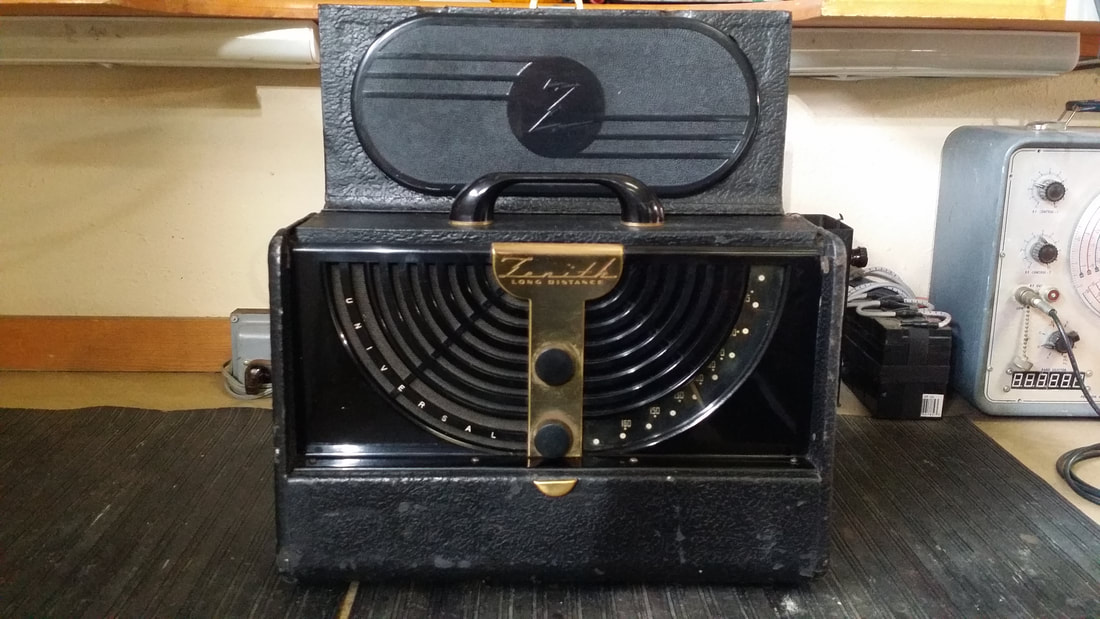
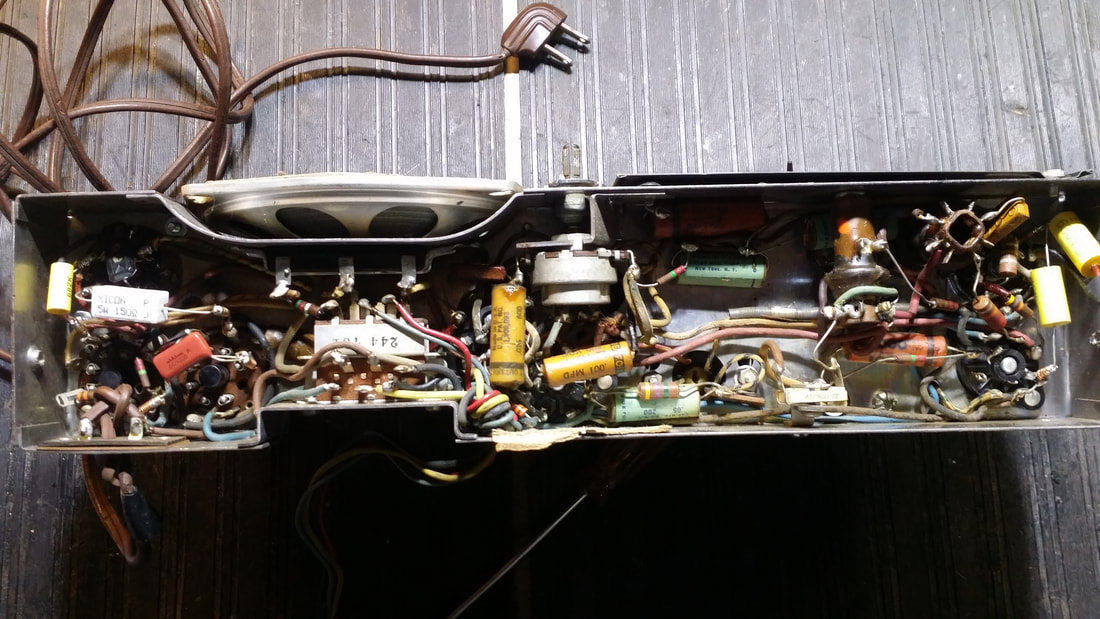
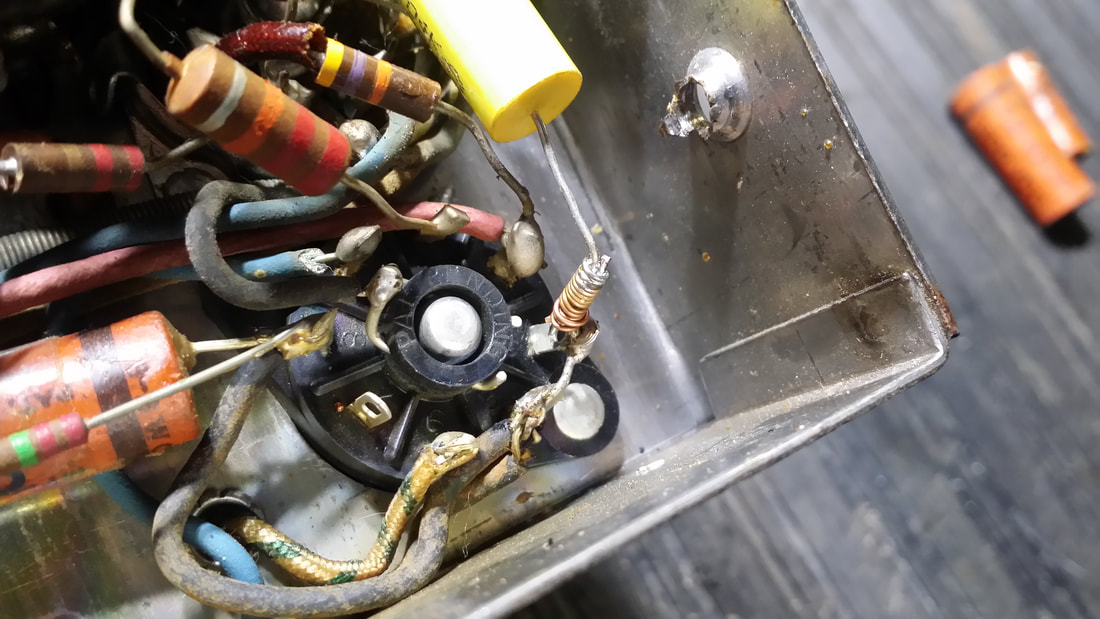
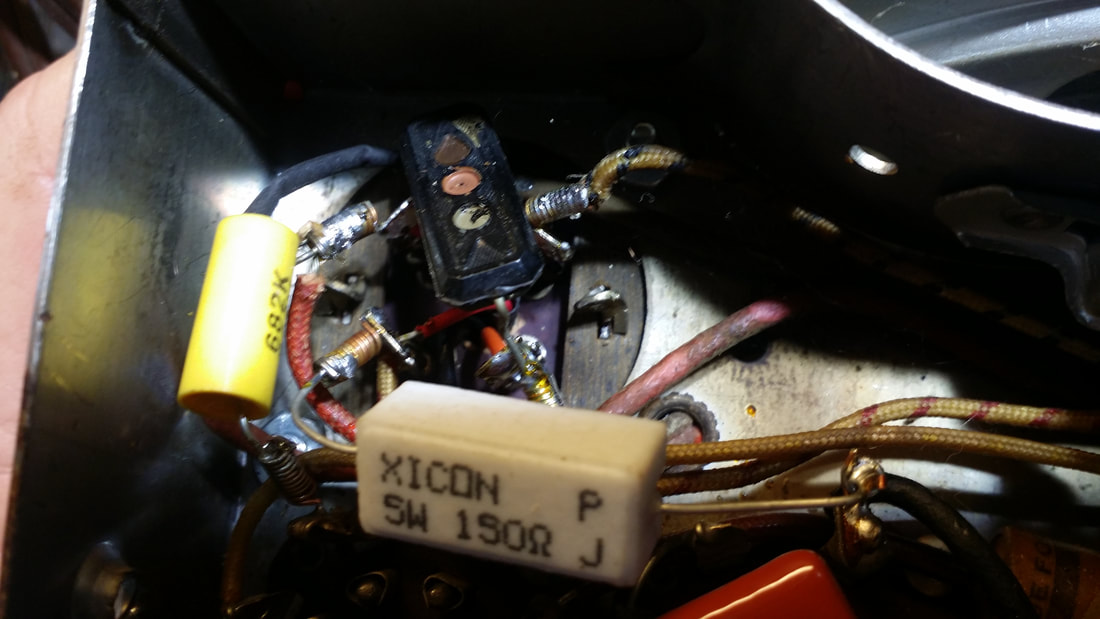
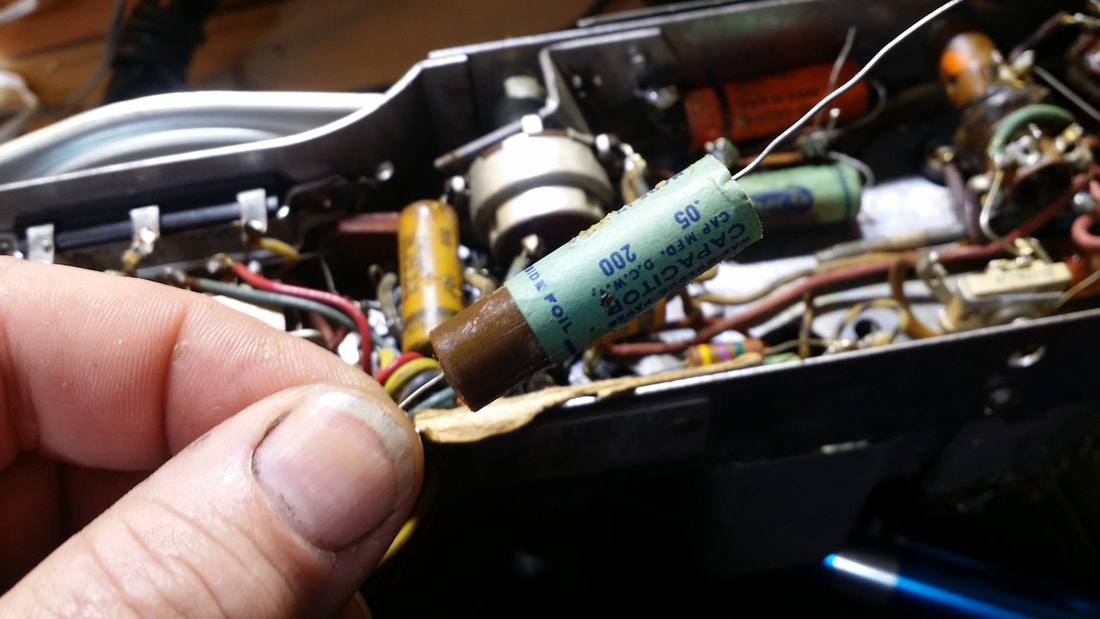
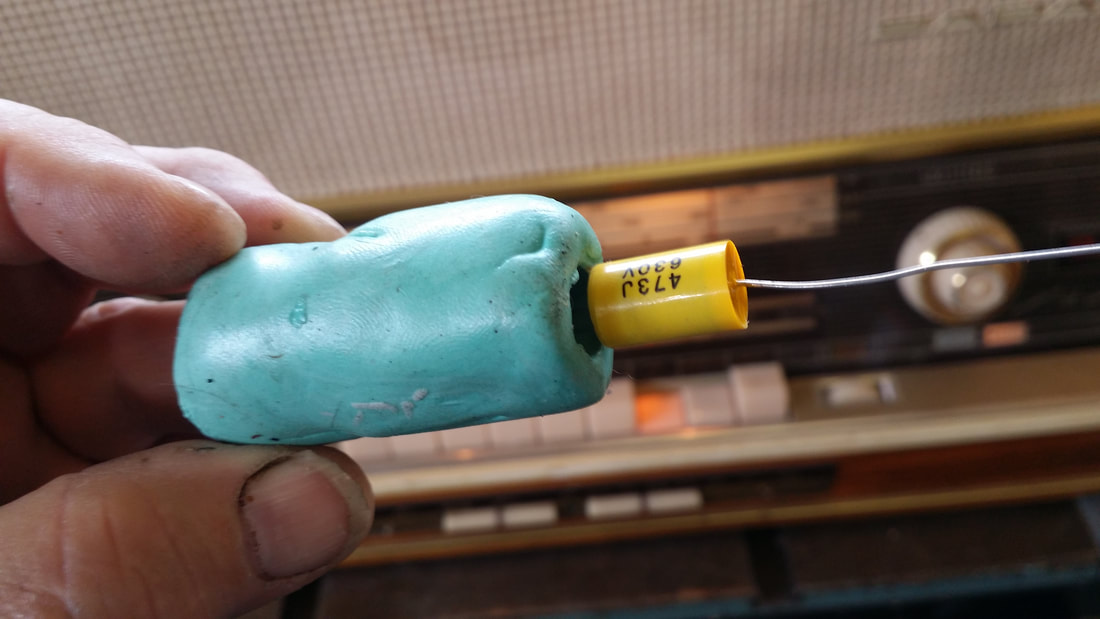
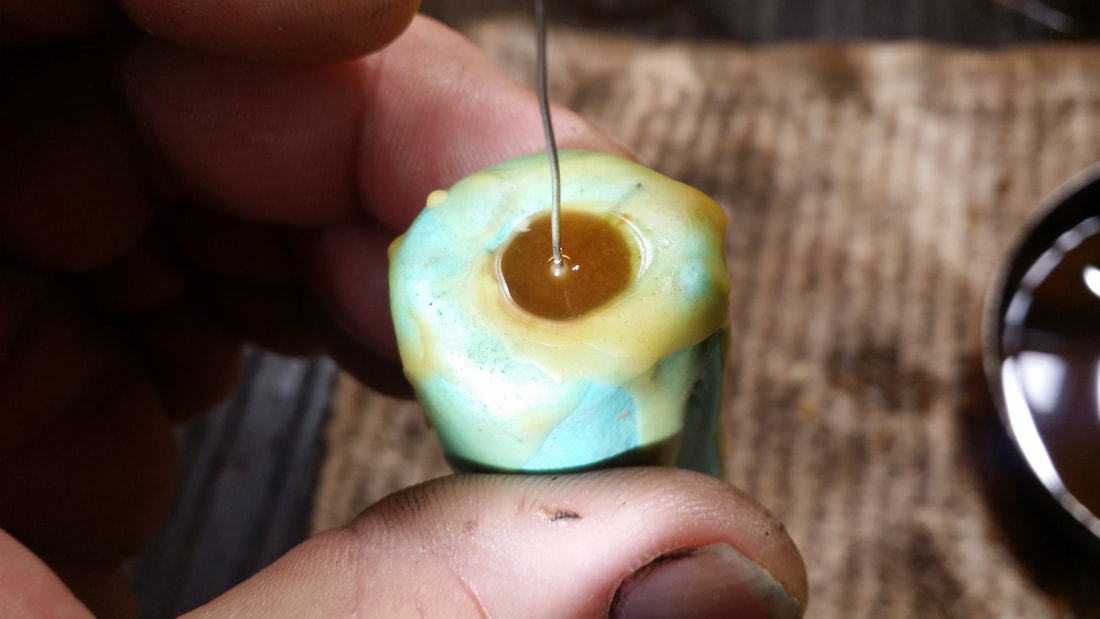
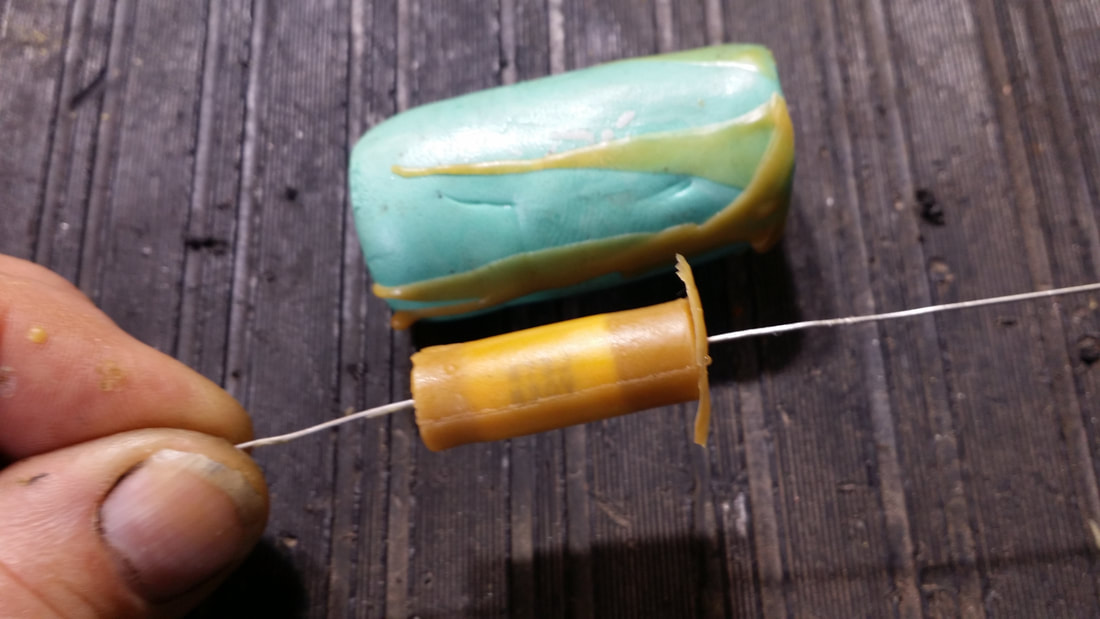
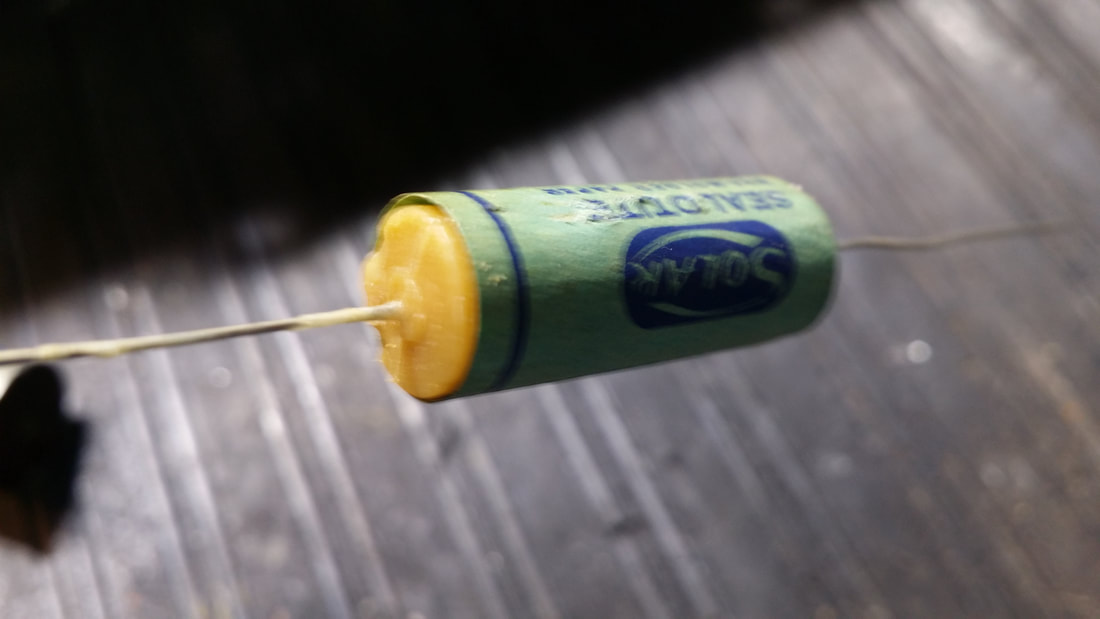
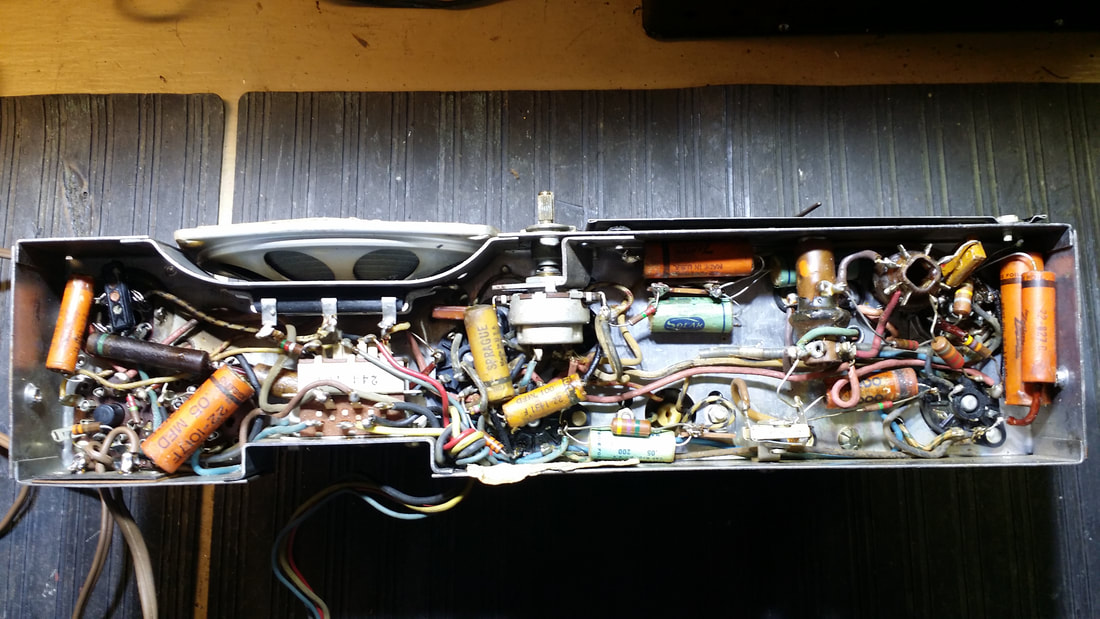
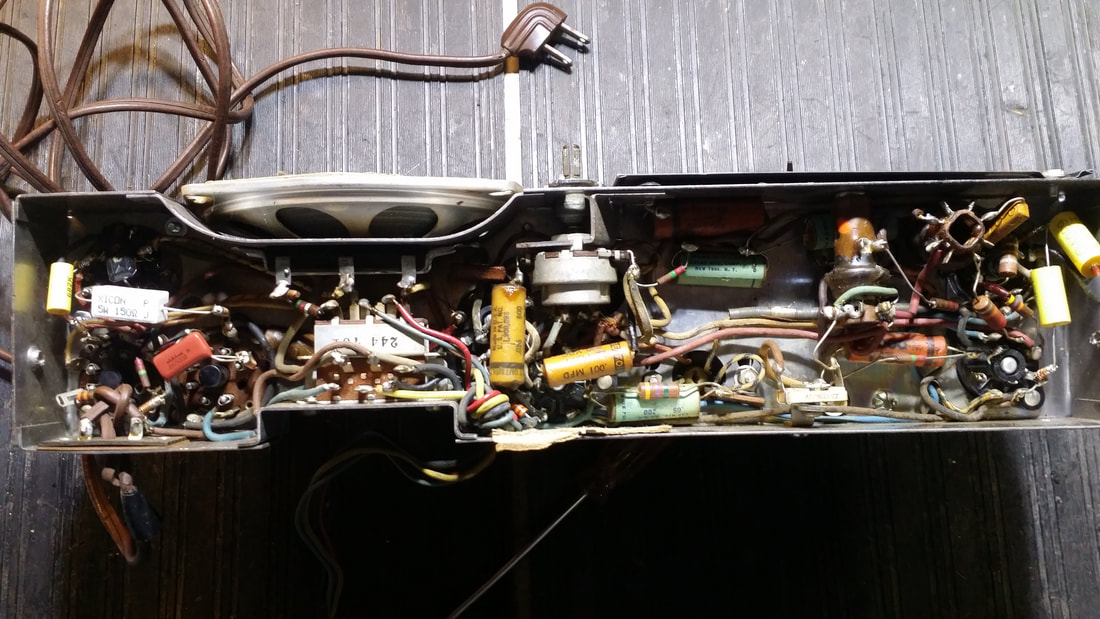
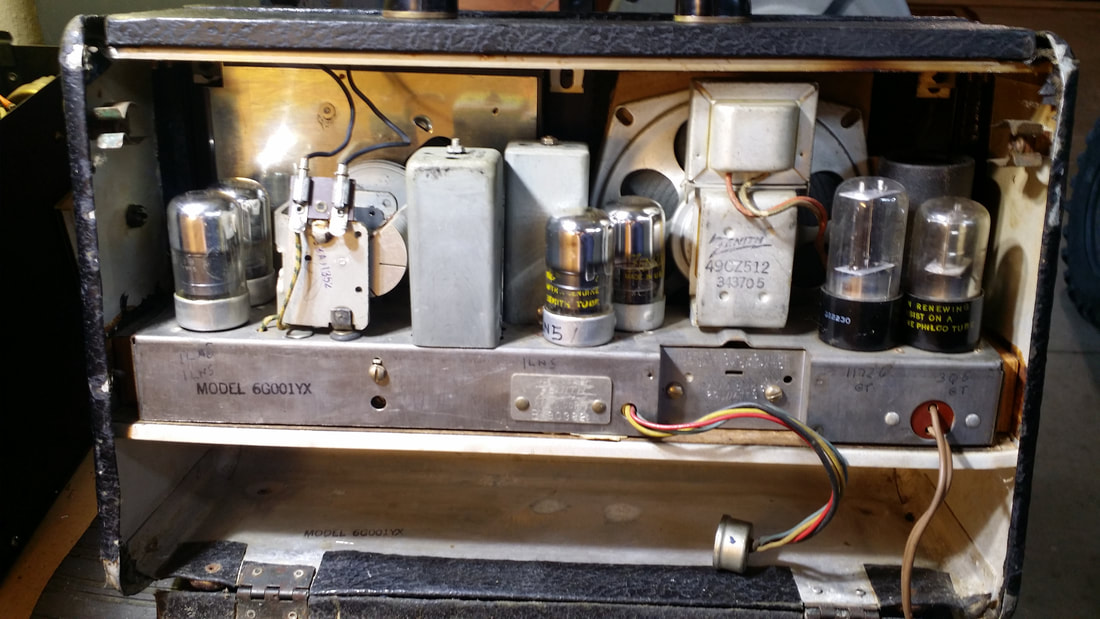

 RSS Feed
RSS Feed